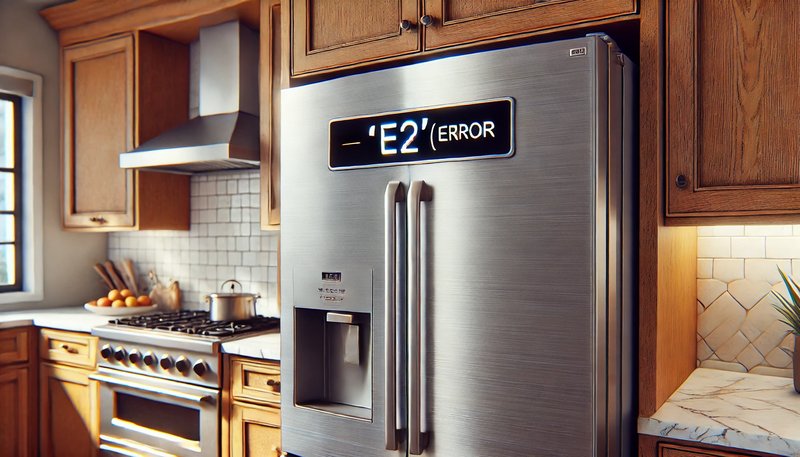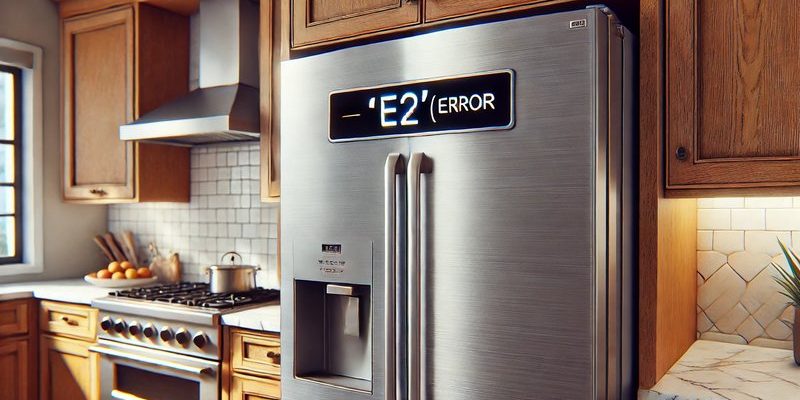
You see, GE refrigerators are equipped with sophisticated systems to ensure they run smoothly and efficiently. When an error code like E3 appears, it’s the refrigerator’s way of alerting you to a potential issue that needs attention. Much like how ignoring the red light on your car dash can lead to more serious engine troubles, overlooking this blinking E3 code could spell trouble for your fridge’s functionality over time. But don’t worry, deciphering what this code means isn’t as daunting as it may seem! Let’s break it down together, step by step.
Understanding What Error Code E3 Means
Error Code E3 on a GE refrigerator typically indicates a problem with the *defrost system*, specifically relating to the defrost circuit. Now, you might be thinking, “What’s a defrost system, and why does it matter?” Well, let’s dive right in. The defrost system in your fridge is responsible for keeping frost from building up inside the freezer compartment. Over time, if frost accumulates, it can hinder the fridge’s ability to keep your food items cool, just like how a frosty windshield obstructs your view when driving.
This system includes several components: the defrost heater, defrost thermostat, and the defrost timer or control board. Imagine these parts working together like a small crew ensuring everything is running smoothly. If one of these components fails or malfunctions, it could trigger the E3 error code. Think of it like a team member taking a sick day—operations might slow down and need some attention to get back on track.
Ignoring this error means risking more than just a few frosty shelves. It can lead to excessive energy consumption as your refrigerator works harder to maintain its temperature. Additionally, it could result in spoiled food if the fridge can’t maintain its cooling efficiency. Not an appealing thought, right? So, the key takeaway here is that addressing Error Code E3 promptly can save you time, money, and a whole lot of hassle in the long run.
What Causes Error Code E3?
Understanding what causes this error is the next step in figuring out how to handle it. In most cases, E3 is related to a faulty defrost heater or thermostat. These components are crucial for melting away any frost build-up that occurs during normal operation. Picture your defrost heater as a little furnace tasked with warming specific freezer parts periodically. If this heater fails, frost will accumulate, potentially triggering the E3 code.
A failed defrost thermostat could also be to blame. This component acts like a thermostat in your house, sensing the temperature inside the freezer coils and signaling the heater to kick in. Think of it as a conductor instructing an orchestra—if the conductor quits, the symphony stops playing the tune correctly, leading to chaos or, in this case, frost chaos.
Sometimes, the error might result from wiring issues or a defective control board, which acts like the brain of your refrigerator. This could lead to improper signals being sent to the defrost system, causing the error code to pop up. Whatever the cause, understanding these underlying components can give you a roadmap to diagnose and fix the problem effectively.
Potential Consequences of Ignoring the E3 Code
Ignoring the E3 error code isn’t just a matter of hearing a persistent beep or seeing a flashing light. There are tangible consequences that can affect both your wallet and your peace of mind. First and foremost, letting the issue linger can cause your fridge to work overtime, leading to increased energy bills. Imagine keeping your fridge running as though you’re constantly revving your car’s engine—it’s bound to consume more fuel, right?
Then, there’s the concern of food spoilage. If your fridge can’t regulate its temperature correctly due to a malfunctioning defrost system, your perishables may not stay fresh, potentially leading to spoilage and waste. It’s like leaving groceries out in the sun; eventually, they go bad, costing you both money and convenience.
Finally, ignoring the E3 code could lead to bigger repair bills down the line. Small problems might escalate into major issues, requiring more complex repairs or component replacements. Think of it as ignoring a small leak in a roof during a dry season, only to face a collapsed ceiling when the rains come. Addressing the error early can prevent these larger, more costly issues from developing.
How to Address and Fix Error Code E3
So, what can you do about it? First, don’t panic. Addressing an E3 Error doesn’t always necessitate a costly service call right away. For starters, consult your refrigerator’s manual; it often contains troubleshooting tips specifically for your model. Thanks to the wonders of modern technology, many manuals are available online if you’ve misplaced yours.
Next, if you’re comfortable with basic DIY repair, you can visually inspect the defrost system components. Unplug your fridge, empty the freezer compartment, and see if you can spot any obvious issues like a burnt-out heater or damaged wiring. Remember, safety comes first, so if you’re unsure about handling electrical components, it’s worth calling a professional.
For persistent errors, consider contacting GE customer support or hiring a certified appliance repair technician. Professionals have the expertise and tools to diagnose and fix the problem accurately. Plus, most technicians can provide tips on how to prevent future occurrences of similar error codes, like regular maintenance and checks. It’s worth every penny to ensure your fridge runs like a well-oiled machine.
Proactive Measures to Prevent Future Errors
Once you’ve resolved the current error, taking steps to prevent future occurrences is crucial. Regular maintenance can extend the lifespan of your refrigerator and keep it running efficiently. Just like scheduling routine oil changes for your car, setting a reminder for periodic fridge maintenance is a wise move.
One tip is to periodically check and clean the coils located at the back or bottom of your refrigerator. Dust and debris can accumulate over time, hindering airflow and causing your fridge to work harder than necessary. Also, keep the door seals clean and check for damage. A tight seal ensures the refrigerator maintains the correct temperature and prevents frost build-up.
Lastly, consider investing in a surge protector for your refrigerator. Power surges can damage sensitive control boards and create a ripple effect on other components, leading to errors like E3. Protecting your appliance from unexpected power fluctuations can prevent many common problems and extend its operational life.
So there you have it—by understanding and addressing GE Refrigerator Error Code E3, you’re not just solving a temporary problem, but also setting your appliance up for long-term success. Remember, your refrigerator is one of the hardest-working appliances in your home, and a little care and attention can go a long way in keeping it happy and healthy!
